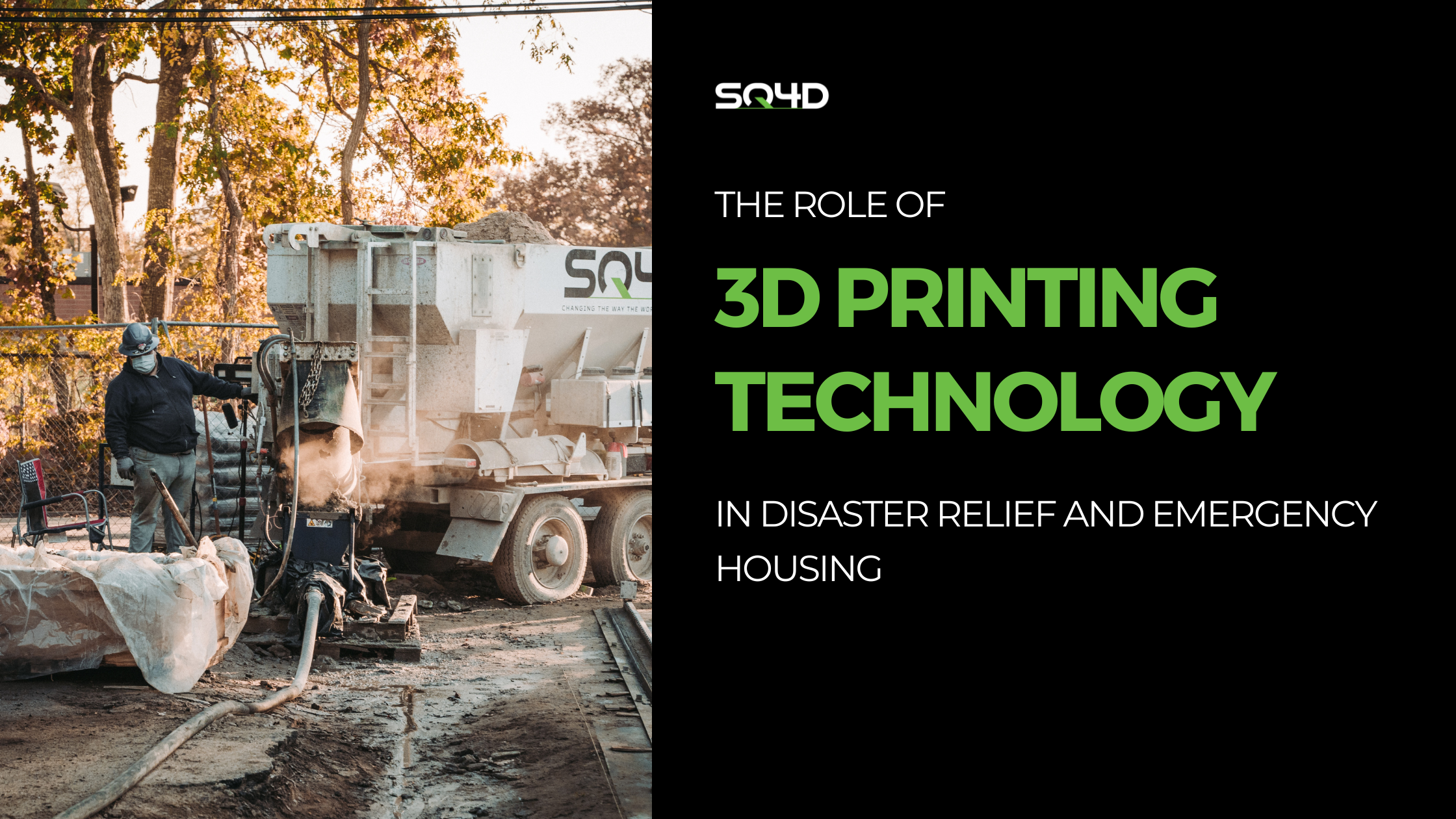
The Role Of 3D Printing Technology In Disaster Relief and Emergency Housing
Whether it is war, natural calamities or pandemics, humanity is no stranger to disasters. Due to this reality the US government has Natural Disaster Response and Recovery programs to help States, Tribes, Territories, Insular Areas and local jurisdictions impacted by disaster. What if we told you that 3D printing technology has the potential to play a significant role in providing disaster relief and emergency housing?
At SQ4D we understand this better than anybody. If you take a look at our project in Islandia, NY, it took us 15 print days to complete this 4 bedroom, 2 bath 2,000-sq-ft home. Compare this to the typical six months of construction for a normal home and you can already see the advantage of 3D printing.
Now imagine you are in a situation where disaster strikes and 100s of people are in need of emergency housing, what would be the best way to address this; using the same methods we’ve been using since the 70s or using new technology that is capable of printing a 2,000-sq-ft home in 15 print days? You don’t need to be a mathematician to figure out what the right answer is. Keep reading to learn more about the various ways 3D printing can be utilized in emergencies.
3D Printing Technology For Disaster Relief And Emergency Housing
Limitations of Conventional Construction in Disaster Relief
Typically there are 4 types of disaster shelters/housing that are built during emergencies:
- Emergency Shelter: This is the most basic shelter that is used for very short periods of time. There wont be any cooking facilities or medical services provided.
- Temporary Shelters: Any sort of easy tent or public mass shelter intended for a few weeks.
- Temporary Housing: Intended for a time period of 6 months to 2 years, temporary housing can be in the form of rental houses, prefabricated buildings and apartments. This type of housing is designed to help people affected by disaster to return to a sense of normal day-to-day life.
- Permanent Housing: The goal of this kind of housing is to build permanent units that are resilient to future disasters. This way people can get back to their lives.
Despite efforts within the construction industry to address the impact of natural disasters, they have been under scrutiny. The main issues related to temporary shelters (TS) and temporary housing (TH) in disaster-prone regions are:
- Not Taking The Weather Into Account: Many times engineers don’t take fluctuations in weather into account. Survivors end up living in inadequate tents during the winter offering no protection from the weather.
- Financial Limitations: The cost of building a temporary structure can sometimes exceed the cost of rebuilding the home.
- Lack Of Basic Amenities: Since these shelters are build for people in a transitional phase a lot of basic amenities such as sewerage, electricity and sanitation are neglected.
- Difficultly In Transportation: In the past there have been issues with delivering and distributing shelters since they are often made in regions that are distant to the areas in need.
Advantages Of 3D Printing Technology During Disasters
Here are some applications of 3D printing incase of an emergency situation:
- Rapid Prototyping: With the power of 3D printing you can create prototypes and design iterations for disaster relief equipment and housing structures. This not only speeds up the development process but it also makes it easier to customize solutions for specific disasters.
- On-Demand Production: Typically during the the aftermath of a disaster one of the major struggles is transporting the various tools, parts, and components necessary for providing disaster relief. 3D printers can rapidly produce medical equipment, spare parts, and other tools onsite.
- Shelter Construction: 3D printers (like the ones we use) can create prefabricated housing components or even entire structures. These printed structures can be durable, cost-effective, and tailored to specific needs.
- Customization: Liked we mentioned above with 3D printing you can have customized solutions for specific needs. This means that shelters can be designed while taking into account factors like climate, culture, and family size.
- Reduced Waste: Traditional construction methods often generate a significant amount of waste. 3D printing can minimize waste by using only the material needed for construction, reducing environmental impact.
- Remote and Inaccessible Areas: 3D printers can reach remote or hard-to-access disaster-stricken areas where traditional construction methods may be impractical. This technology can be deployed with less reliance on heavy machinery and a dedicated workforce.
- Retrofitting Existing Structures: 3D printing can be used to retrofit damaged structures quickly, reinforcing their stability and extending their usability in the aftermath of a disaster.
- Cost-Efficiency: While the initial investment in 3D printing technology can be significant, the ability to produce items on-site and the reduced waste can lead to cost savings in the long run.
- Disaster Preparedness: 3D printing technology can be used in advance of disasters to produce stockpiles of essential items and components, making emergency response more efficient.
SQ4D Can Solve This Problem
Disaster relief and emergency housing is long over due for an upgrade. The old way of doing things has proven to be too expensive, insufficient and in many cases just impractical. At SQ4D we want to harness the power of 3D Printing Technology to provide fast, cost effective relief and adequate housing to areas in need. In addition to revolutionizing the way in which shelters are built we can also rapidly produce the equipment needed on site and even stockpile equipment before hand to be prepared.
If you are curious to learn more about this exciting new technology please get in touch with SQ4D today!